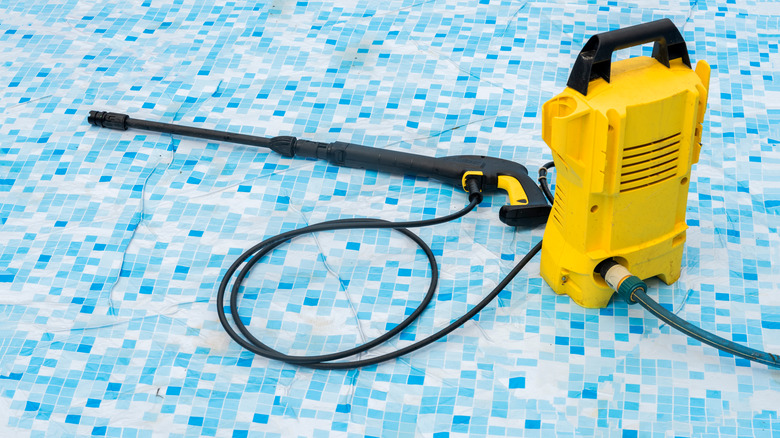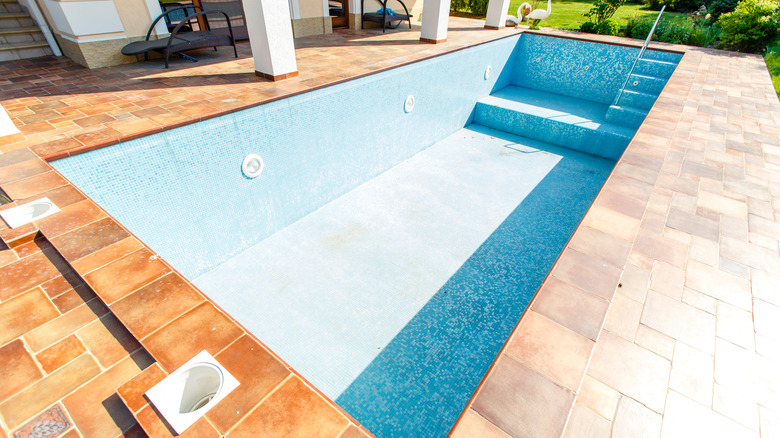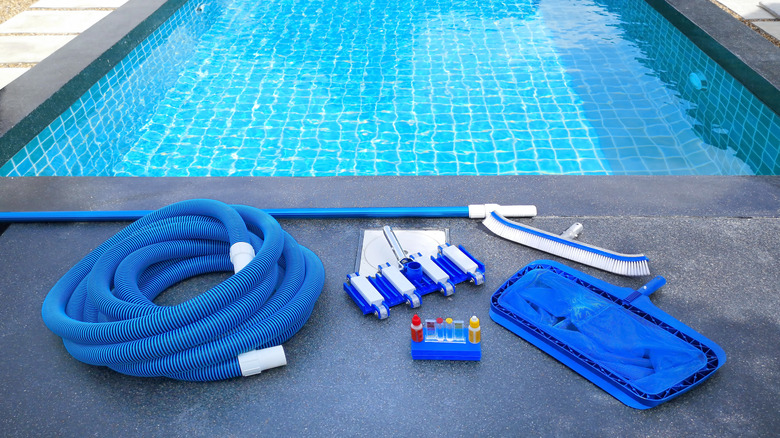How To Clean Pool Waterline Tiles And Make It Last
We may receive a commission on purchases made from links.
Swimming is an excellent source of recreation and relaxation, but the icky result of not cleaning your pool can make your time in the water feel far less luxurious. When formulating a cleaning routine, deciding the best way to freshen up your waterline tiles is essential since this is where the most calcium and magnesium carbonate deposits occur over time.
To get a good view of the waterline, pump some water out of your pool until you can clearly see the line of sludge. Then, hit the deposits with a stiff-bristled brush so that they'll be easier to clean. You can then make a paste from water and baking soda and continue scrubbing the tiles vigorously. When done routinely, this method will ensure your waterline tiles stay clean. However, if this tactic doesn't restore them to their former glory, a more heavy-duty solution may be in order.
Pressure washing is probably the most efficient method for cleaning this area. If you're willing to invest in (or rent) the right equipment and aren't afraid to go the DIY route, a steam pressure washer will blast dirt, calcium deposits, and bacteria from the waterline with lasting effect. On the other hand, you may opt to have the tiles professionally cleaned through glass bead blasting. This abrasive technique breaks through grime, dirt, and chemical residue without causing costly damage.
Cleaning waterline tile with a pressure washer
Unlike a pool vacuum, which is commonly used for cleaning the bottoms of pools, a pressure washer is ideal for cleaning the side walls. The steam pressure washer technique doesn't rely on chemical agents, which can change your pool's pH balance, weaken the chlorine level, and transform your pool into a breeding ground for algae and bacteria. Of course, more algae and bacteria mean more time spent cleaning!
Before grabbing your pressure washer, you'll need to drain your pool and gather the proper safety gear, such as protective eyewear and clothing. Then, at a safe pressure level between 1,200 and 2,600 psi, you can begin cleaning by focusing on one area at a time. It's better to start at a lower pressure and adjust from there to prevent damaging your tiles. Moving your pressure washer in consistent, horizontal movements will also mitigate this risk.
Another way to make your waterline tile cleaning last is by choosing an appropriate spray nozzle. For instance, heavy-duty jobs and hard-to-reach corners may call for a high-pressure turbo nozzle. These combine high water pressure with a wider spray radius, helping you to work more efficiently.
Efficiency of glass bead blasting
Glass bead blasting is a cleaning technique that professionals swear by because it is a quick method that doesn't involve chemical agents and is safe for various pool tiles. Maintenance teams blast abrasive material made from recycled glass that easily pierces through grime. An ambivalent pool owner with reservations about DIY cleaning may find that a professional's expertise is a better option since pros are less likely to cause damage. They can also clean your waterline tile without draining your pool, which usually costs an additional $175 to $225 on top of cleaning fees.
An average tile cleaning service will usually run homeowners around $500. The main perk in hiring a maintenance team to clean your waterline tile is that you don't have to worry about any post-service cleanup; the leftover glass beads are easy to get rid of and are less work than having to filter unwanted cleaning chemicals out of your pool. Work smarter, not harder!


